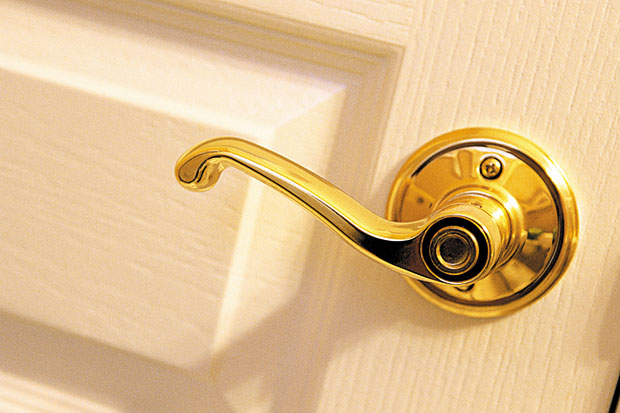How to deal with difficult doors
I started marking my kids’ heights and was shocked recently to see that my youngest had grown a whole inch within the past month. I have seen subtle signs of his growth in everyday life. He is reaching tabletops, switches and doorknobs that he previously couldn’t. His motor skills are improving, too. Now, he is at a point where he can open and close bedroom doors completely on his own — with the exception of one.
This door, unfortunately, is a tricky one. The only way to close it properly is to lift the entire door, by the knob, so that it lines up with the latch. To get more insight as to why this might be and how we can fix it, I turned to Marshall Hickox of Homeworks Construction.
Hickox says the place to start is with the framing, which affects the whole door system.
“Getting a door right can be one of the toughest parts of a finish carpenter’s job if the framing is not right,” Hickox said. “Finish carpenters take pride in not only how true their doors are but the speed in which they can hang them. Done right you should really only need one seasonal adjustment for a near lifetime of operation.”
Problems that can result from improper framing include issues that we often take for granted or attribute to our homes being old.
“If not done well, your door may stick, sag, squeak, open or close on its own, or feel like you need to push or pull it to open,” he said. “If the door seems to be swinging well but just not ‘catching’ to lock or if it rattles, you can most likely adjust the strike plate.”
To fix the strike plate, Hickox advises you start by putting a piece of masking tape on it and gently closing the door against it (not all the way).
“See if the marks the latch makes line up with the hole in the strike plate. You may need to adjust up or down or front to back,” he said. “Many times you can remedy the problem by first checking the screws on the hinges to make sure they are not stripped and have a solid ‘grab’ into the framing or blocking of the door. If not, you can fix this by replacing the screw with a longer one or back out the screw and fill the hole with wood putty, wood glue, or a wood plug and then reinsert the screw.”
While you do this, be careful not to over-tighten.
“An inexperienced carpenter using today’s more powerful cordless screw guns might lack the touch of a journeyman to understand when the hinge screws are tight enough and not stripped out,” Hickox said. “If the door worked before, many times retightening will fix the problem.”
Have a comment or question for Joanne? Email thefixisinhawaii@gmail.com.

